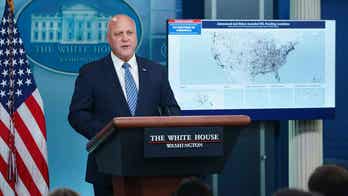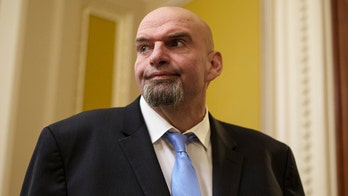Hobbs, New Mexico - Mitt Romney unveiled his plan for energy in America Thursday, pledging to do what he says President Obama has failed to - reduce prices for consumers and leave North America energy independent by 2020.
"It is achievable," Romney said while flanked by heavy equipment used for oil exploration at a trucking facility. "This is not some pie in the sky kind of thing. This is a real, achievable objective."
Romney's slimmed-down six-point plan, previewed to reporters Wednesday evening, revolves around increasing domestic oil and gas production in order to spur job growth, while reducing red tape and streamlining federal regulations he argues hinder growth.
Among his proposals, Romney called for increased offshore drilling along the continental shelf, reducing wait times for drilling permits on federally controlled lands, and completing the Keystone XL pipeline to bring in oil from Canada - a constant criticism from Romney who has called its approval "a no brainer."
The increased production, according a briefing paper released by the Romney campaign, will create 3 million jobs - 1 million of them in the manufacturing sector - and upwards of $500 billion in additional Gross Domestic Product. And for cash strapped municipalities and states, they argue it will increase tax revenues by up to $1 trillion over 10-years.
"That's more good wages," Romney said. "That's an opportunity for more Americans to have a bright and prosperous future."
In addition to the 15 million barrels already produced in the US daily, Romney said his proposals would produce 2 million barrels from off shore drilling, 2 million barrels from "tight" oil production - oil reached through horizontal drilling and "fracking" - 1 million barrels of bio diesel, and another 2 million barrels in natural gas. The extra production, Romney argues, would leave North America completely self-sufficient.
"The net of all this, as you can see, is by 2020, we're able to produce somewhere between 23 and 28 million barrels per day of oil and we won't need to buy any oil from the Middle East or Venezuela or anywhere else that we don't want to," Romney said.
While many of his proposals discussed had previously been released, Romney used his speech to contrast his plan with that of the president's. On permits, Romney criticized the waiting period - 307 days - for approval on federal lands, citing reduced wait times on state lands - 10 days in North Dakota and 27 days in Colorado. And he argued the president's policies have favored renewable energy, at the expense of carbon based energy.
"Sometimes I have the impression that the whole regulatory attitude of the administration is trying to stop oil and gas and coal," Romney mused. "That instead they want to get those things so expensive and so rare that wind and solar become highly cost effective and efficient."
Democrats have criticized Romney for relying too heavily on non-renewable resources, and are quick to point out his plan largely favors the oil and gas industry over other forms of energy. Romney has raised upwards of $10 million over the past few days during fundraisers held by executives in the oil and gas industry.
In a statement following the event, Obama campaign spokesperson Lis Smith said, "[Romney] wants to keep giving billions of dollars in tax subsidies to the big oil and gas companies and recklessly open new areas for drilling, but turn our back on increasing energy efficiency and developing our clean, homegrown energy sources. That's not a recipe for energy independence- it would only ensure that big oil's profits continue to increase while we cede our clean energy sector, which is supporting jobs in states like Michigan, Ohio, and Iowa, to China."




